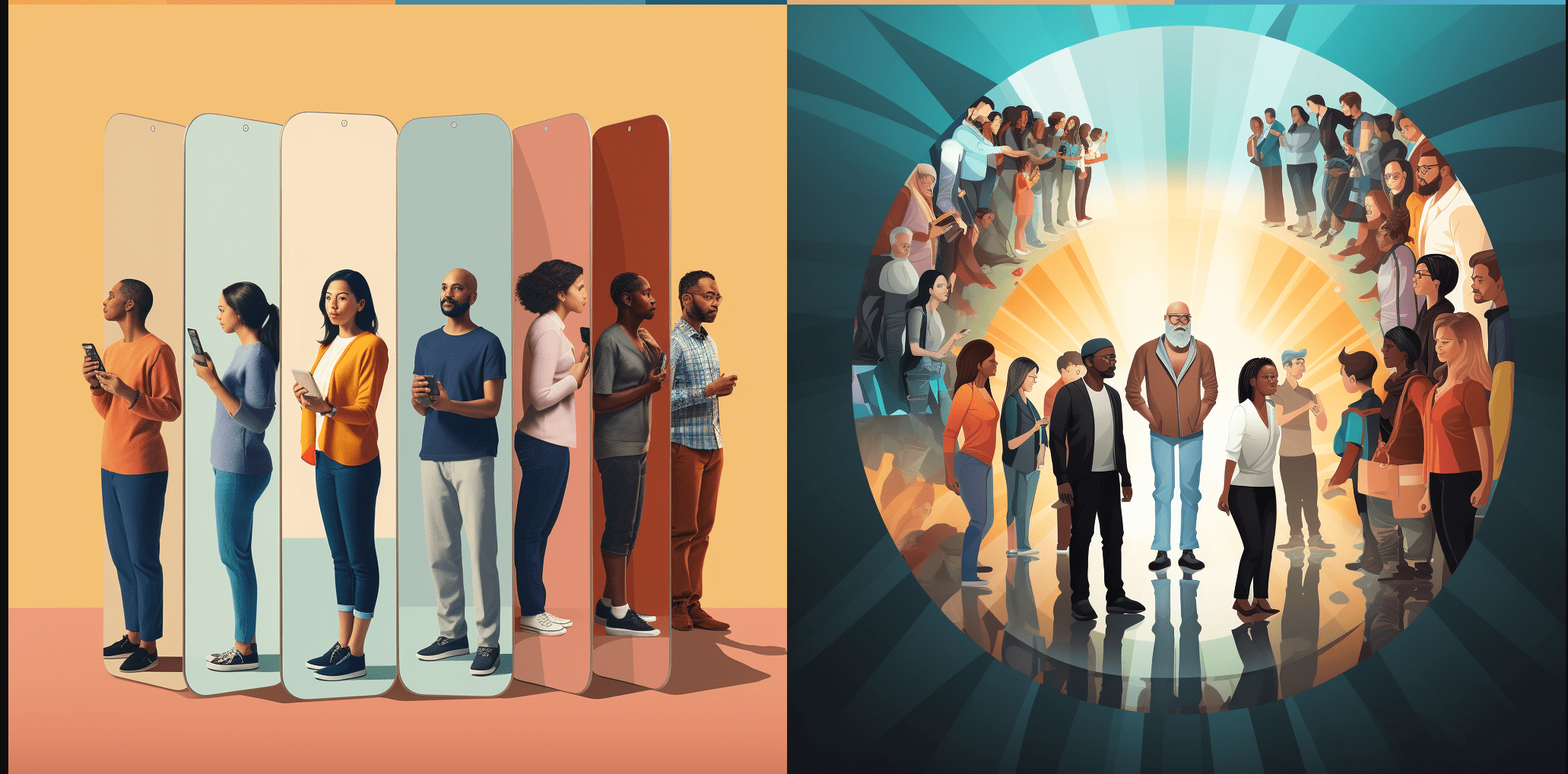Social Media Narcissism. We live in a world where selfies, influencers, and ‘Likes’ rule supreme – a world where, if you didn’t Instagram your avocado toast breakfast, it didn’t really happen. This can lead some to wonder if we’re breeding a generation of narcissists, too in love with their own image to consider anything beyond it.
It’s easy to make the leap from self-absorbed to narcissistic, but what percentage of the population can truly claim to be card-carrying Narcissists? In terms of those diagnosed with Narcissistic Personality Disorder (NPD), estimates place the percentage between 0.5% to 1%. Not quite as high as your Facebook feed might suggest, right?
Before you start analyzing every #nofilter selfie for signs of NPD, remember that Narcissism isn’t about the number of selfies taken or how perfect the pout is; it’s a personality disorder characterized by an inflated sense of self-importance, a deep need for excessive attention and admiration, troubled relationships, and a lack of empathy for others. In contrast, your cousin posting his gym gains daily might just be a fitness enthusiast.
The Social Media Mirage
Now, let’s take a trip to the social media landscape. On these platforms, certain behaviors might seem like narcissism, but aren’t. Take the classic “humble brag”, for example. We all know the type: “Accidentally ran a half marathon on my morning jog today! #oops #fitnessgoals”. It can appear narcissistic, but often it’s just an awkward attempt at self-promotion, not a symptom of NPD.
Even the endless stream of selfies isn’t a definitive sign of narcissism. The nature of social media platforms encourages us to present the best version of ourselves, which often means capturing our best angles in the perfect lighting. It can feel narcissistic, but it’s just part of the game.
Tiptoeing around Narcissus: Handling Narcissists in Real Life
Navigating relationships with genuine narcissists, however, is no laughing matter. Here are some serious tips:
- Establish Boundaries: It’s important to protect yourself by setting clear boundaries about what you’re comfortable with.
- Stay Firm: Narcissists often test boundaries, so consistency is key.
- Don’t Take it Personally: Their behavior reflects their internal state, not your worth.
- Seek Professional Support: Therapists and counselors can provide valuable guidance.
Narcissistic Personality Disorder: The Actual Diagnosis
For a clinical diagnosis of NPD, a person must exhibit at least five of the following characteristics:
- A grandiose sense of self-importance.
- Preoccupation with fantasies of unlimited success, power, brilliance, beauty, or ideal love.
- Belief that they are special and unique and can only be understood by, or should associate with, other special or high-status people or institutions.
- Need for excessive admiration.
- Sense of entitlement.
- Interpersonally exploitative behavior.
- Lack of empathy.
- Envy of others or a belief that others are envious of them.
- Demonstration of arrogant and haughty behaviors or attitudes.
A Fun Dive into Data: Narcissism and Social Media Platforms
Let’s now take a fun plunge into a simplified chart of the estimated number of users on popular social media platforms and speculate the potential percentage of narcissists on each:
| Platform | Users (in billions) | Estimated Narcissists (0.5% – 1%) |
|---|---|---|
| 2.8 | 14 – 28 million | |
| 1.2 | 6 – 12 million | |
| 0.3 | 1.5 – 3 million | |
| TikTok | 1.0 | 5 – 10 million |
| 0.7 | 3.5 – 7 million |
Remember, these figures are just for fun, a playful nod to our topic.
So, the next time you’re scrolling through endless selfies and feel a twitch of annoyance, remember that narcissism is more complex than just a love of one’s own image. It’s a serious condition that affects a small percentage of the population. As for the rest, let’s just keep doing our best in this sea of selfies.
How many podcasters might be narcissists?
While exact numbers for active podcasters across these platforms are challenging to estimate, we can make an informed guess using available data. The podcasting landscape is incredibly diverse, with over 2 million podcasts and more than 48 million episodes as of 2022.
Let’s look at the most popular podcast hosting platforms and estimate the number of podcasters who might fit our 0.5% to 1% Narcissist range. Please remember, this is purely speculative and is not based on any clinical assessments:
| Podcast Platform | Estimated Number of Podcasters (in thousands) | Estimated Narcissists (0.5% – 1%) |
|---|---|---|
| Anchor (Spotify) | 3,000 | 15,000 – 30,000 |
| Apple Podcasts | 1,000 | 5,000 – 10,000 |
| Soundcloud | 76 | 380 – 760 |
| Libsyn | 50 | 250 – 500 |
| Podbean | 40 | 200 – 400 |
Keep in mind, this is a simplified estimate as many podcasters host their content on multiple platforms. Furthermore, the total number of podcasters worldwide can vary greatly depending on the source, and a lot of them might be inactive.
Again, these figures are just a playful speculation. Podcasting requires a certain level of confidence and desire to share one’s voice, but this doesn’t automatically suggest narcissism. It’s crucial not to equate the two. Happy podcasting!
